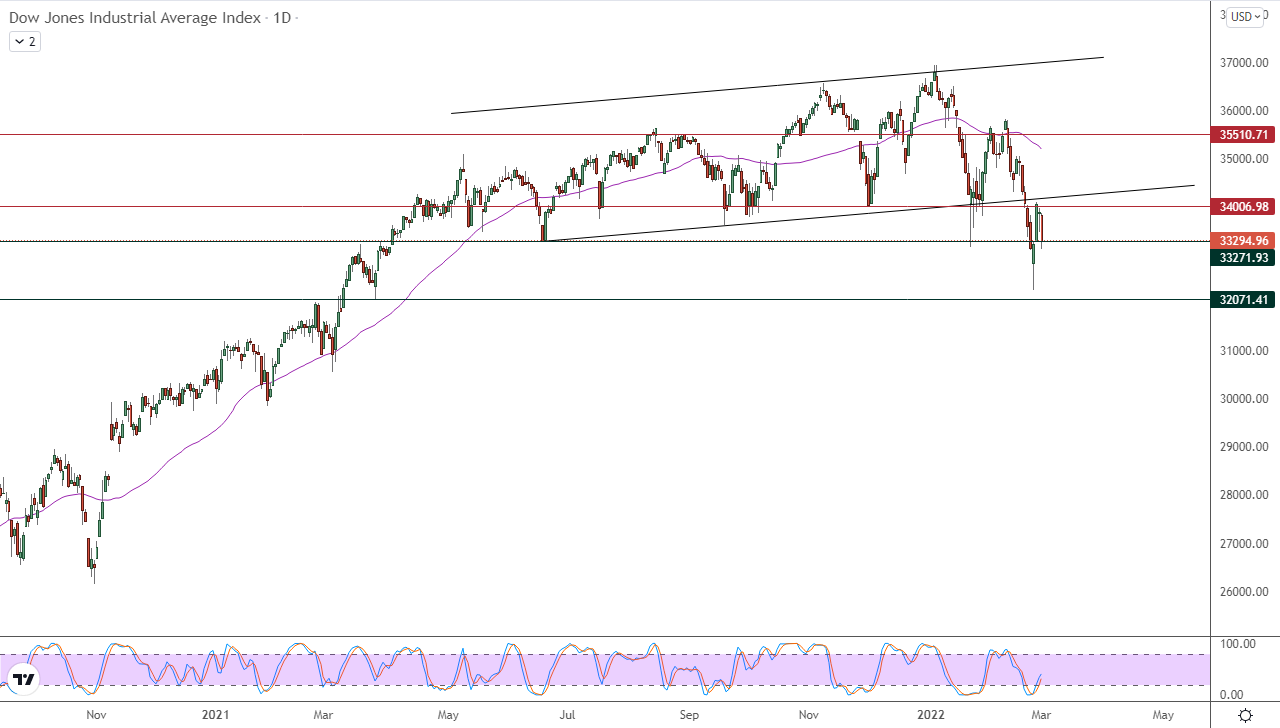The Dow Jones Industrial Average declined during its recent trading at the intraday levels, to record losses for the second day in a row, by -1.76%. It lost the index towards -597.65 points, ending one of the worst sessions of 2022, and settled at the end of trading at 33,294.96. After falling in trading on Monday, it declined by -0.49%.
26 of the 30 index components declined, with the decliners being led by American Express Co., by percentage. by -8.47%, and Boeing Co. by 5.08%, then JPMorgan Chase & Co. shares by -3.77%.
President Joe Biden delivered an upbeat speech on Tuesday, saying America is "stronger today than it was a year ago," even as war rages in Eastern Europe and concerns about inflation persist domestically. The letter came after the United States announced that it would close US airspace to all Russian flights, a point Biden mentioned in his speech saying that "further isolates Russia and increases pressure on its economy."
The president also said that Russian President Vladimir Putin's unprovoked attack on Ukraine "will make Russia weaker and the rest of the world stronger."
Biden presented a plan to reduce inflation by boosting domestic manufacturing, and highlighted treatments and vaccines against the Corona virus, despite fears of new mutations.
Meanwhile, Russia on Tuesday intensified its bombing of the second largest city in Ukraine, Kharkiv. No tangible progress was made in ceasefire talks between Russia and Ukraine that were held near Ukraine's border with Belarus on Monday, although the two sides agreed to continue talks.
On the economic data front, the Institute for Supply Management said its manufacturing index rose to 58.6% in February, up from a 14-month low of 57.6% the previous month. Economists polled by the Wall Street Journal had expected the index to rise to 58%. Any number above 50% indicates growth.
Technically, the index retreated after it retested the main resistance level 34,000 as we expected it in our previous reports. This is with its impact by breaking a minor bullish trend line earlier, as shown in the attached chart for a (daily) period, while the index suffers from continuing negative pressure. This is due to its trading below the simple moving average for the previous 50 days.
The index's decline came despite the start of positive signals on the relative strength indicators, after they reached oversold areas, to try to drain some of this oversold, which may curb the index's losses in the future.
Therefore, we expect more decline for the index during its upcoming trading, especially if it breaks the current support 33,271.93, to target the support level 32,071.40.


